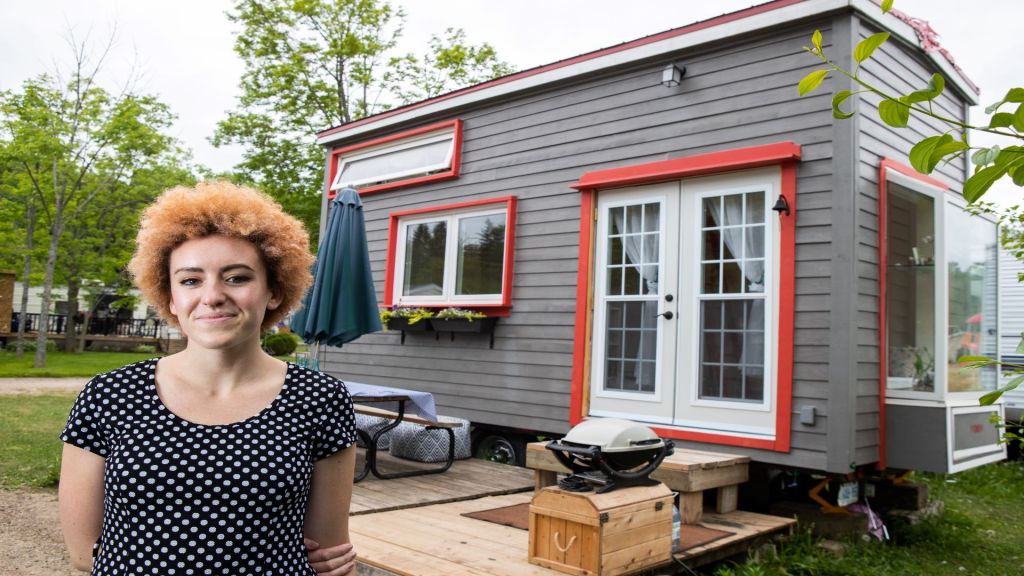On the surface, tiny homes seem to address the needs of those who need the least. The affluent New Yorker seeking a COVID getaway near the beach, or a recent grad making a name for herself off the grid are the ideal images of tiny house inhabitants. But in (what we hope is) the wake of a pandemic, public health officials and city planners are seeing the value of tiny houses for those in need. The compact panacea This summer, the U.S. faces an interconnected web of high unemployment, a high cost of living near job hubs and seemingly unending wave of COVID-19 infection rates. Those who can are migrating from cities to less populated suburbs in search of space and peace. They’re often taking their remote work with them. But for more than half a million homeless people in the United States and 16.3 million unemployed, that’s not an option. City planners are turning to tiny houses to de-intensify shelter housing, bring people in off of the streets and offer affordable housing for those in need. Additionally, the compact units facilitate social distancing while offering access to private, outdoor space that isn’t readily available in multifamily and public housing. Long term, low-cost tiny houses provides a pathway to homeownership (and potentially, wealth-building equity) for marginalized communities. It took a pandemic to showcase the true value of tiny homes. Affordable housing and homeless services in America are permanently enhanced because of it. Tiny homes improve public health in major metros Seattle was one of the first cities in the US to feel the full force of the pandemic. The city’s vulnerable populations, the homeless and elderly, were the hardest hit. On April 20, Public Health Seattle & King County officials reported 112 COVID-19 infections amongst shelter occupants and staff. Later that month, The Multi-Service Center South shelter in San Francisco reported 96 guests and 10 staff tested positive. As the pandemic spread, major metropolitan reported high infection rates among vulnerable populations. Homeless shelters, traditionally arranged in barrack-style floorplans, did little to slow the spread of the virus. Major metros throughout the nation soon ditched conventional shelter arrangements to promote social distancing: they removed beds to lessen density, and converted hotels and public buildings into emergency shelters. These short-term solutions, however, highlight problems that won’t quickly fade from memory. Homeless shelters are underserved and overpacked. Low-Income Housing Institute’s (LIHI) tiny house villages stood out as a long-term solution. They facilitate public health procedures, foster a sense of safety and autonomy, and have proven to be more cost-effective than conventional shelters. LIHI operates 12 villages serving Seattle, Olympia and Tacoma. The newest community stands in Puget Sound, offering 400 houses that have helped more than 1,000 each year. Two more communities are in the works with at least 50 houses. Each community contains units with less than 100 square-feet. The tiny spaces offer more personal space and privacy than shelters. The houses permit residents to live and sleep more than six feet apart. On-site case managers provide the support residents need while facilitating a path towards permanent housing. The villages pay off for residents as well as city managers. The City of Seattle, for example, funds nine villages. The average cost of tiny house living is only $38 per night. That’s $18-$94 less per night than The City’s current housing options. The construction of the homes is also a cost saver for The City. Shelterforce organizes volunteers to build the homes. Much of the construction can take place off-site in volunteers’ yards when necessary. The free labor reduces home construction costs to $2,500 each. In dire straits, Shelterforce hires contractors who build the homes for $5,500 including labor and materials. In both cases, the per square-foot cost has proven to be more cost effective than conventional shelters. Be Loved Village, Asheville combats homelessness and affordability crisis Asheville has struggled with affordability...

